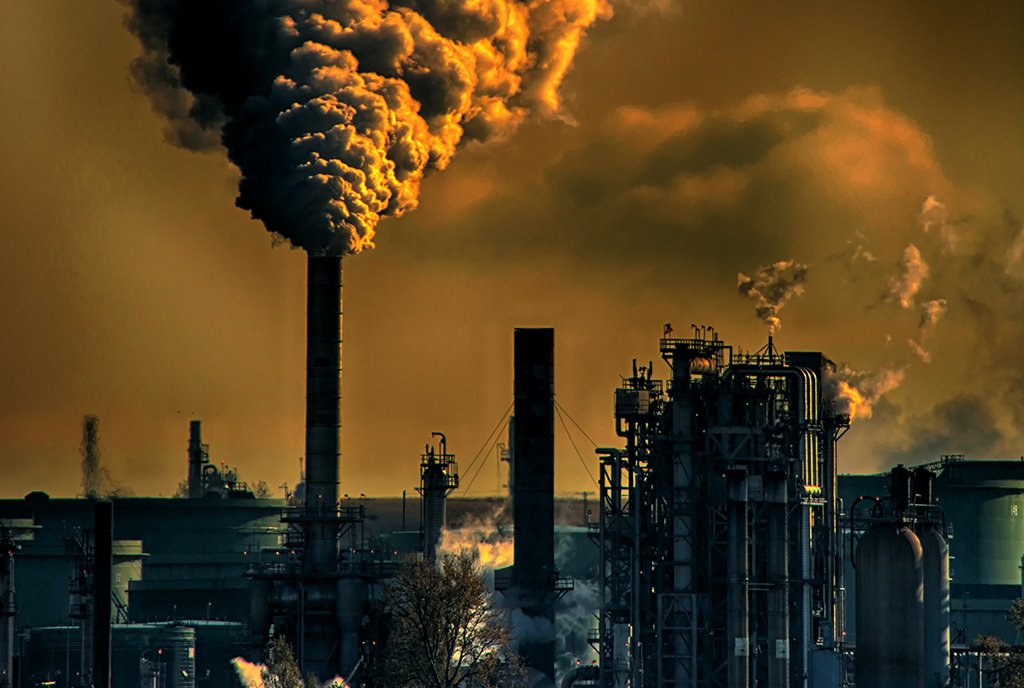
Maya Etienne is co-executive director of Calumet Collaborative, a sustainable economic development organization based in Gary, IN, her home and the city where many of her family and friends still live. Gary is also home to the country’s largest steel mill: US Steel’s Gary Works. And according to a September report from the Sierra Club, Gary, a relatively small city with a population of about 68,000, is one of the nation’s largest polluters.
The Sierra Club’s new report, Coming Clean on Industrial Emissions: Challenges, Inequities, and Opportunities in U.S. Steel, Aluminum, Cement, and Coke, has identified the top 200 polluters in the United States. The report analyzed hundreds of industrial facilities across the country and comes at a heightened time when the Environmental Protection Agency is proposing new regulations for the pollutants resulting from steel and iron production.
Increased regulation is only one needed approach to tackling this persistent and complex problem. As the new report illustrates, Maya Etienne and others in Gary live in the long shadow of an industry that has both supported and threatened vulnerable communities for generations.
“Communities near steel plants that use basic oxygen furnaces—the type of furnace used for primary steel production at the Gary facility—are particularly disadvantaged.”
Community Impact
The industrial sector in the United States—the part of the economy made up of manufacturing and the production of goods—is to blame for almost a quarter of all domestic greenhouse gas emissions, according to the Sierra Club. The sector relies on burning fossil fuels to either provide power or heat used in production processes, representing nearly a third of all methane gas consumption in the country.
“I love being in Gary,” Etienne, who moved back to Indiana in 2013 after living in Boston, told Inside Climate News. “But at the same time, I’m like, my child needs to be able to live in a space where she can breathe with no issues.”
The Sierra Club report looked at United States facilities operating in four different industrial processes: iron and steel, cement, aluminum, and metallurgical coke for the iron and steel industry. These facilities can emit sulfur dioxide, nitrogen dioxide, and other toxins, which the Sierra Club describes as “far-reaching,” meaning they impact animals, plants, and people in the surrounding areas.
One of those areas is Gary, a city considered a healthcare desert due to a lack of medical providers. Indiana’s infant mortality rate is 20 percent higher than the national average, and Gary, where the population is majority Black, specifically lacks pediatricians. The implications of this are dire for the local population and beyond. In an earlier interview with NPQ about maternity care deserts, Dr. Elizabeth Cherot of the March of Dimes told us, “We know that nations are healthiest if their families are. It’s the foundation. If you don’t get prenatal care, your outcomes are worse.”
As Inside Climate News writes, “Communities near steel plants that use basic oxygen furnaces—the type of furnace used for primary steel production at the Gary facility—are particularly disadvantaged, with higher unemployment, lower educational attainment and a higher percentage of people of color than all other industries considered in the report, and the United States, on average.”
“It’s still a source of pride to be able to have a job at the steel mill.”
Most of the communities surrounding industrial facilities are made up of people of color, and those individuals living near metallurgical coke and steel plants face higher than average rates of cancer. The report found that the “majority of facilities are located in low-income communities and communities already overburdened by fine particulate pollution.”
Labor Considerations
Communities can be harmed by the very thing they rely on, as the industries covered by the report also bring a benefit to local economies, employing approximately 100,000 people nationally. Processing, sourcing, and transporting the materials produced by these plants create additional jobs in other related industries. The report acknowledges the importance of these labor considerations, especially for communities already disproportionally impacted by unemployment, and that the “materials produced from these facilities also form the bedrock of many economic activities (construction, auto manufacturing, aerospace, and more) that support our daily lives.”
Sign up for our free newsletters
Subscribe to NPQ's newsletters to have our top stories delivered directly to your inbox.
By signing up, you agree to our privacy policy and terms of use, and to receive messages from NPQ and our partners.
For some people, like Etienne, the work is generational. “When I was growing up, a lot of people in my family worked in the steel mill,” she told Inside Climate News. “My grandmother worked in the steel mill, my grandfather—I don’t think I thought much of it.”
“It’s still a source of pride to be able to have a job at the steel mill,” Etienne said. And that job is harder to come by than ever. Gary Works employs about 4,300 people now—down from about 30,000 workers 50 years ago.
We still don’t have precise data when it comes to pollution from manufacturing, in part because facilities are expected to self-report emissions.
The top polluters found by the report were clustered in the Rust Belt, an area of the United States known for manufacturing—and a region of significant industrial decline and a deep, ongoing struggle with joblessness. Within a 10-year period between 2000 and 2010, employment in the manufacturing industry dropped by 35 percent in the Great Lake states, a larger decline than during the Great Depression, according to the Brookings Institution. This resulted in the loss of 1.6 million jobs.
The Need for Better Measurement
The Sierra Club acknowledges that manufacturing can be an economic lifeline to many communities while also stressing both environmental degradation and health risks. According to the report, eliminating the particulate matter emitted from heavy manufacturing “alone would avoid 1,250 to 2,830 deaths in the United States annually, alongside meaningfully reducing chronic and acute illnesses.”
These numbers could even be low estimates. The report stresses that we still don’t have precise data when it comes to pollution from manufacturing, in part because facilities are expected to self-report emissions to the US Environmental Protection Agency. This self-reporting comes from a variety of ways of measuring carbon and pollutants, which the Sierra Club writes can lead to “inconsistency and imprecision.” Such non-standardized methods of measurement can deter “effective community engagement with industry on pollution abatement” and can affect policymaking.
In other words, we can’t know what to do until we know exactly what we’re dealing with.
In many parts of the country, data collection on air pollution is persistently lacking or even absent entirely. The report from the Sierra Club emphasizes that new and upcoming technologies in the manufacturing sector could create opportunities to measure more accurately. Earlier this summer, NPQ reported on TEMPO, a new satellite instrument designed to measure air pollution levels in often neglected or overlooked places.
Emerging technologies could also reduce emissions, and abate pollution, according to the report, which stresses that great pollution reduction results would be achieved “with technologies that shift the industry away from processes that create emissions, rather than those that control emissions after they are created.”
Clearly, addressing pollution from heavy manufacturing is urgent and complex, and must account for the both health and economic wellbeing of local communities. As the Sierra Club writes, “The goal of this research is to support public engagement with industry and government around policies to transform American manufacturing to serve a more sustainable economy, while improving climate and public health impacts.”












